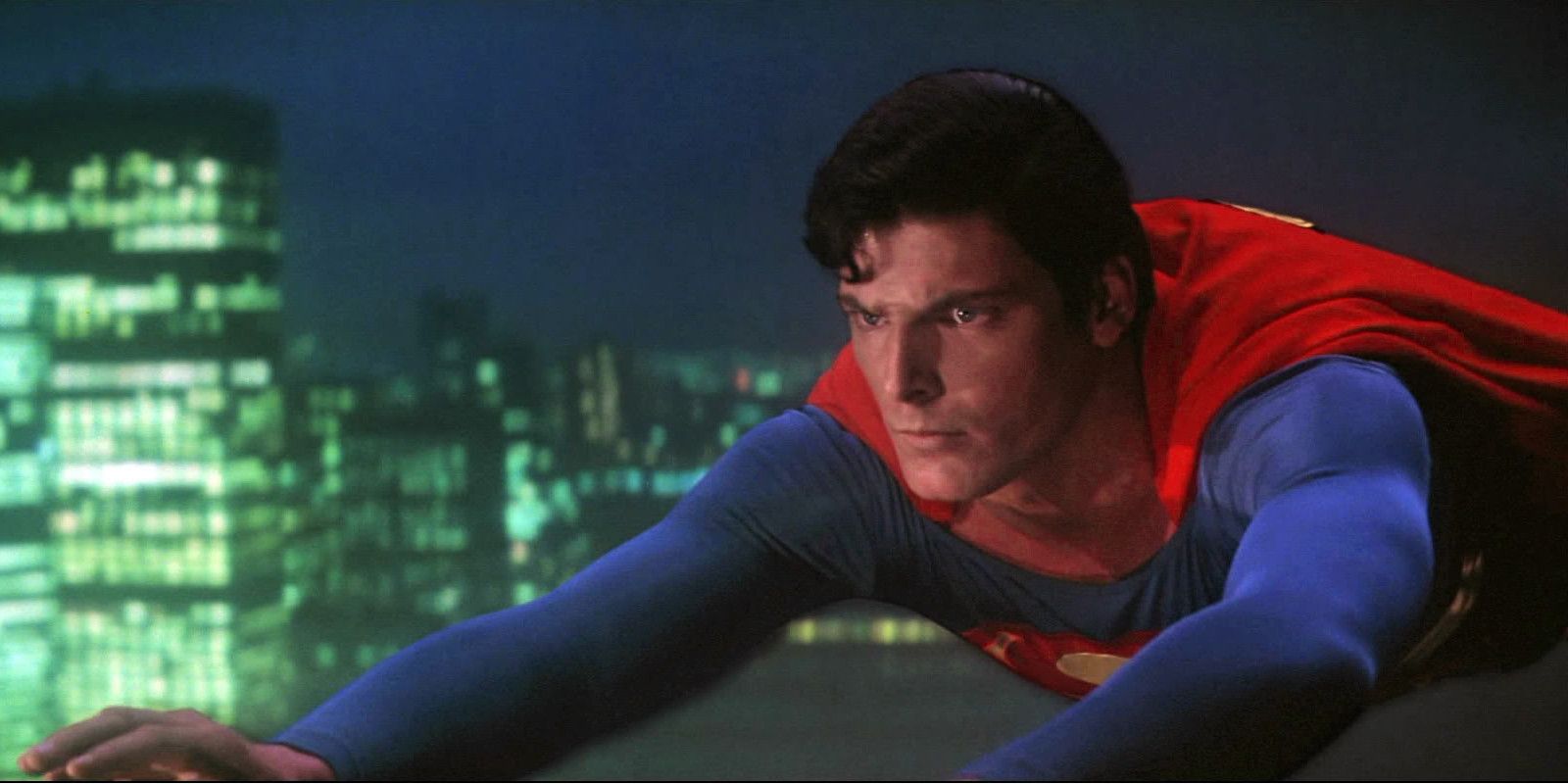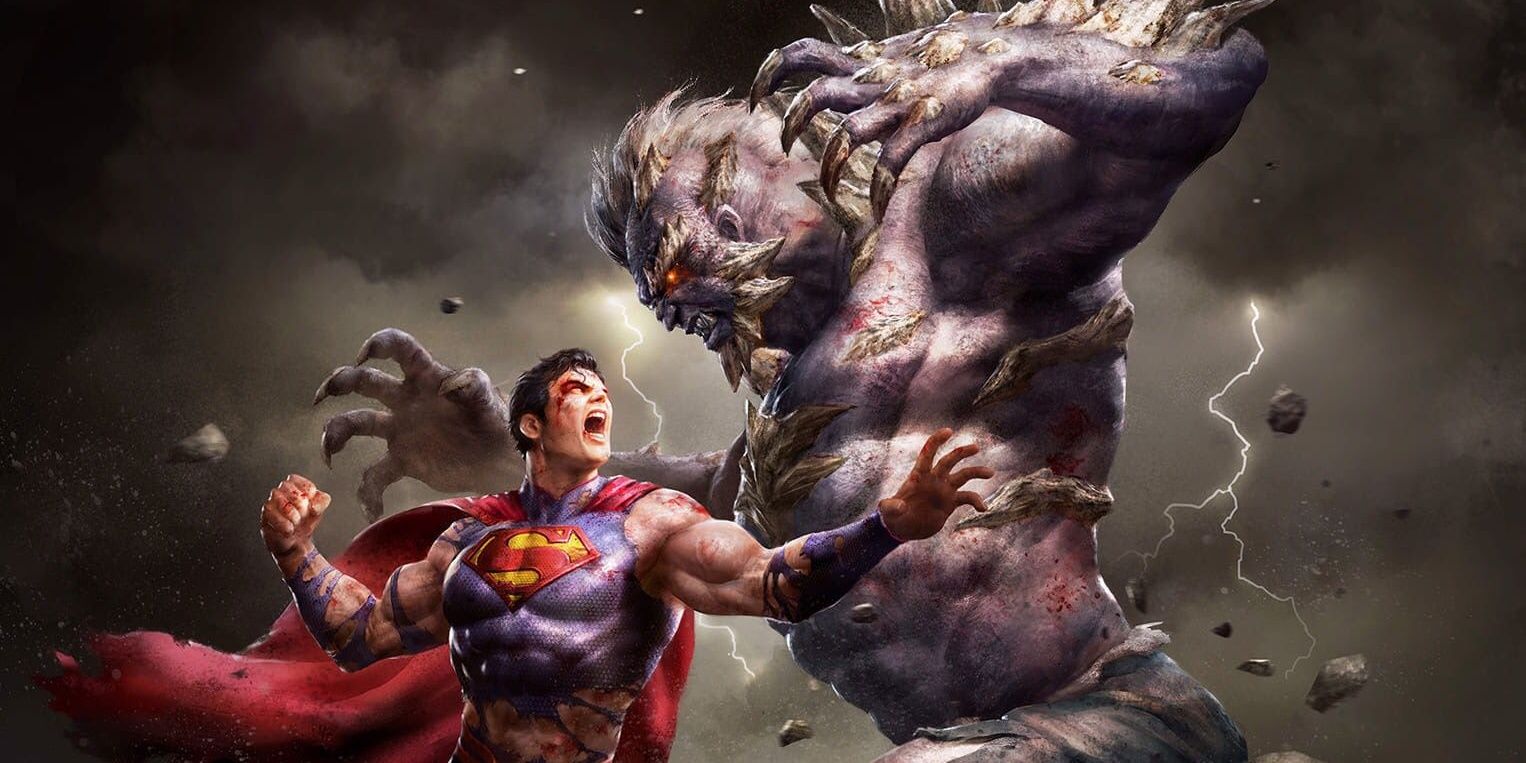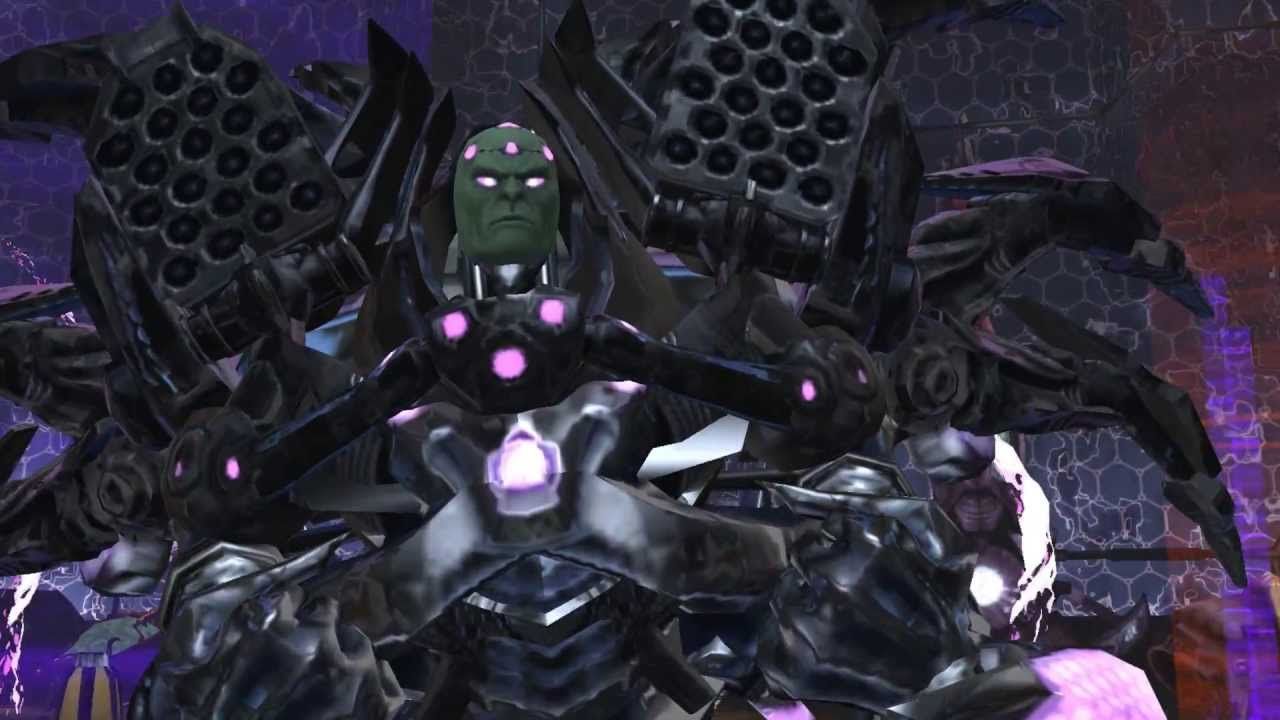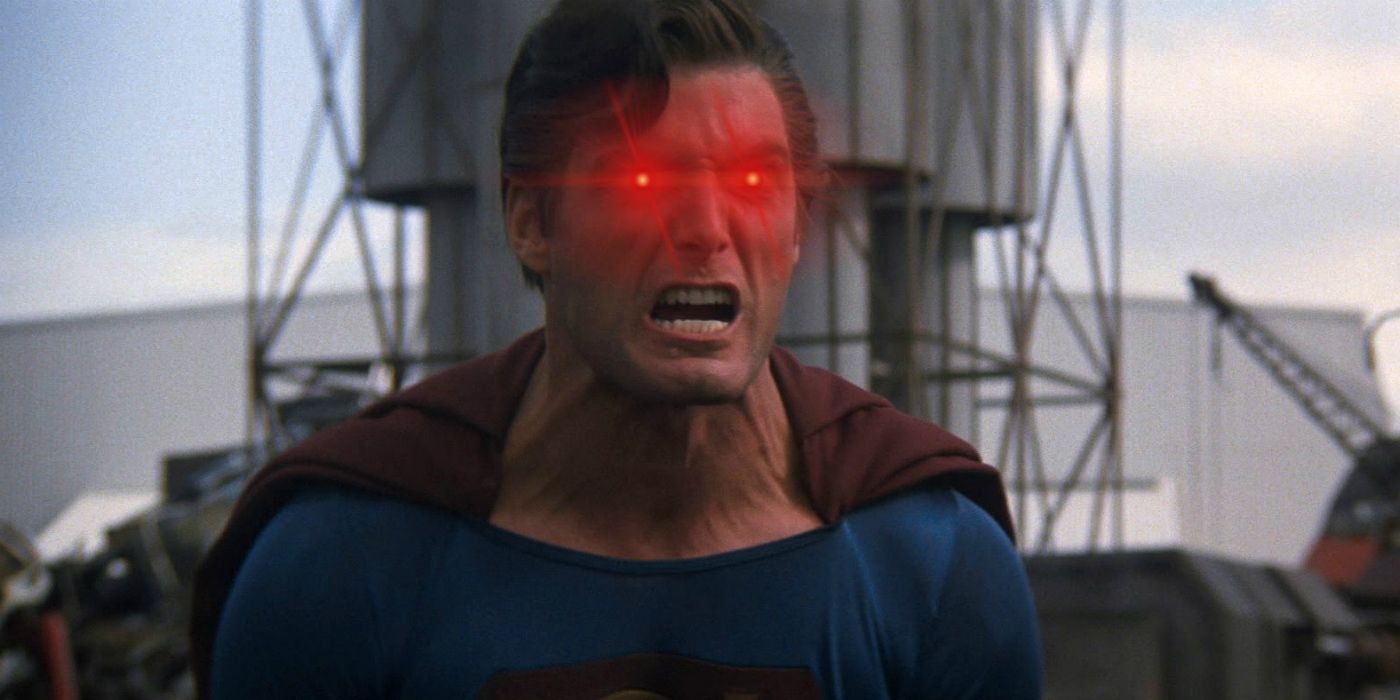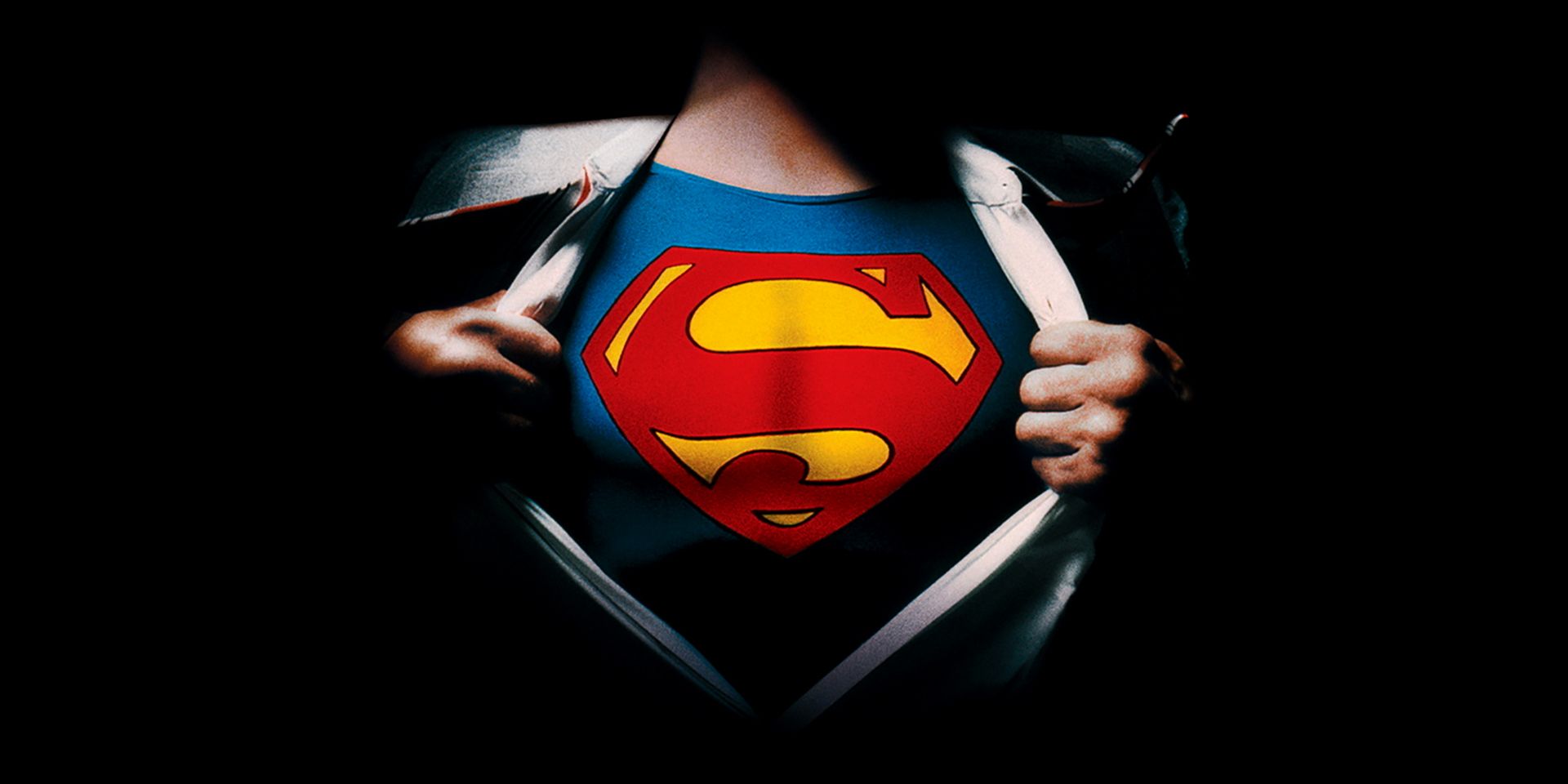Welcome to the 22nd installment of Page One Rewrite, where I examine comics-to-screen adaptations that just couldn’t make it. This week, I'll look at the original plans for Christopher Reeve to return to the role of Superman in the early 1990s. And if you have future suggestions, please let me know on Twitter.
Decades before superheroes dominated the box office, Hollywood considered comic book adaptations low priorities, trash material not worth most producers' time. Batman did receive a feature film in the late 1960s, thanks to the early success of ABC's Batman in 1966, but this came during the wave of a pop culture fad, with the concept treated as a literal joke. Not exactly what diehard comics fans were looking for.
In 1974, Ilya and Alexander Salkind, joined by Pierre Spengler, purchased the film rights to Superman with the intention of treating this as a serious, A-list film with top stars. The eventual film, 1978's Superman from director Richard Donner, treated the Man of Steel with reverence and provided a blueprint for adapting superheroes for the big screen. Fans and critics praised the casting of unknown actor Christopher Reeve as Superman, citing his ability to effectively portray both the timid Clark Kent and heroic Superman. Many comic book artists have also remarked on Reeve's uncanny resemblance to Superman. Even into the 2000s, artists like Gary Frank were taking direct inspiration from Reeve's physical appearance when drawing Superman.
The Decline of a Franchise
Critical reaction to each subsequent film cooled, however, culminating in 1987's notorious flop, Superman IV: The Quest for Peace. The Salkinds had licensed the movie out to Cannon Films, at the time chiefly known for direct-to-video action films, not realizing the film's production would be a disaster. With a slashed budget and choppy post-production edits, Superman IV bombed at the box office, and many questioned if Christopher Reeve would ever play the hero again.
In 1991, Reeve was in talks to return to the role in a new film, once again produced by the Salkinds, hoping to undo the damage to the franchise. The history of what's been referred to as both Superman V and Superman Reborn (and sometimes both titles together) begins with a comics writer with a long history with the Man of Steel.
Cary Bates was a regular writer on the Superman titles from 1967 to 1986, stepping aside when DC instituted a total revamp of the continuity during a much-hyped relaunch from writer/artist John Byrne. Going back to 1983, Bates was asked by DC to represent their interests during the production of Superman III, the sequel that veered towards comedy over action (against DC's protests.)
On the set, Bates befriended Ilya Salkind and would later serve as one of the main writers on the Salkind-produced Superboy live-action syndicated series. While filming Superboy, Bates showed Salkind his spec script for a Superman film he'd written years earlier. This inspired Salkind to attempt another Superman movie with Reeve, one that would correct the mistakes of the previous sequels. Joining Bates would be fellow Superboy writer Mark Jones and Salkind himself. As Bates recounted years later at ComicBookMovie: "The intent was to leapfrog over Superman III and especially IV, and return the series to the high mark achieved in 1 and 2. It was our desire to do a fully developed, balls-out science fiction story pitting Superman and Brainiac against each other mano a mano."
The Morbid "Death of Superman" Obsession
Early concepts for Superman V involve Superman dying in battle, an idea present in several abandoned screenplays from the '90s and '00s. This script's genesis, however, predates the comic book "Death of Superman" crossover event by over a year. In fact, the story comes from Bates' rejected pitch for the 1986 Superman comics reboot. As he told Superman Homepage: "Ironically it combined two of the themes DC would later incorporate in separate storylines years apart: de-powering (the Byrne reboot) and death (the Doomsday arc). My scenario called for a five or six part mini-series in which Superman 'died' first and was reborn later, inside a yellow sun. I believe I proposed introducing some never-before-revealed wrinkles in Kryptonian physiology that made this possible, but at a steep cost."
Reportedly, one draft had Brainiac emerging in Metropolis as Clark Kent wrestles for his feelings for Lois Lane. He dies during the battle, only confessing his love for Lois in her arms during his final breath. Superman's soul then enters Lois' body and impregnates her with the spirit of Superman. The baby is born days later and grows to adulthood in only three weeks. Lois is killed before the final act, inspiring the neophyte Superman to embrace his legacy and finally defeat Brainiac.
A less bizarre take, per reports, appeared in a later draft. In this version, an anxiety-prone Superman seeks the help of a psychoanalyst to discuss his dual-identity issues and his feelings for Lois. Brainiac arrives in Metropolis with his creation Doomsday, and the resulting battle kills Superman. Project Cadmus steals his body from Brainiac in the hopes of cloning the last Kryptonian. His spirit then travels the afterlife, the journey convincing the hero that his work on Earth is not yet done. Superman's body is revived by his spirit, but now powerless. Through sheer grit, Superman wills the return of his powers, reconciles with Lois, and defeats Brainiac.
The timeline of these drafts does get muddled, with Doomsday appearing in a script apparently written just as the character made his comics debut. The leaked draft covered today, however, is apparently the third attempt, dated 8/23/92, indicating it was written in the early days of the "Death of Superman" event. Doomsday doesn't appear, but Brainiac causes plenty of havoc without him.
Superman Enters the '90s
Reborn introduces Brainiac as an intimidating robot, and not a bald green man with a fantastic goatee (a revamp the comics had already made in the early 1980s.) He dominates space with his hi-tech ark, destroying planets and imprisoning the few survivors. His alien assistant Kosmo secretly loathes Brainiac, and arranges for him to discover Earth in the hopes that Superman can end the villain's reign of terror.
From there, the traditional supporting cast is introduced. There's some attempt to indicate this is a modern version of the Daily Planet updated for the '90s, but aside a reference to its hi-tech newsroom with "modems and VDTs" and Jimmy Olsen's sassy pop culture references, it feels similar to the previous films.
Lois, who still doesn't know Clark's secret, is sick of Superman always leaving for emergencies, their relationship never evolving. She's a human, but is accepting now that he isn't. She's leaving Metropolis for a job writing for the Los Angeles Times. A cool action sequence (Lois so happens to be closing her bank account as the place is being robbed) enables Superman to showcase his powers and reiterate his classic dilemma of loving Lois but remaining unable to commit, due to his obligations. She gets in a cab, ready to say goodbye forever.
The moment Lois reaches city limits however, Brianiac drops a forcefield around Metropolis. A cop sacrifices himself, saving a teenager from an accident during the commotion. Brainiac uses the cop's body to clone himself a new human form…and enabling him to be portrayed by a "name" actor of the day. Brainiac then dons a belt that shoots energy blasts, his main weapon for the fight scenes. (Apparently, no one realized it would look as if Brainiac's firing death rays from his crotch.) In a human body, Brainiac now has a full range of emotions. He deletes remorse.
Superman confronts Brainiac in the Metropolis streets, and seemingly falls dead after a powerful blast. Brainiac then attempts to woo Lois aboard his ark, amused at the thought of stealing Superman's love. She convinces him to give her two days for mourning. After buying some time, she befriends Kosmos and schemes against Brainiac. Lois discovers Brainiac shrinks his chosen cities and traps them within crystalline eggs. Metropolis has joined them.
Not Dead Yet
Drawing inspiration from Silver Age comics, one of Brainiac's cities is Kandor, collected by the alien intelligence before Krypton's destruction. Superman's body, we learn, is in the City of Kandor's "Pyramid of Healing" -- their doctors beamed him out of the fight.
The doctors are intimidated by the imposing Elder known as Max-Dur, an old rival of Superman's father Jor-El. Superman awakes with no powers in a strange white outfit (intended to be Marlon Brando's costume from the first movie) and with a beard. He walks out into the crystalline, futuristic City of Kandor, under a red sun. (Which is actually a lamp replica Brainiac aims at the miniaturized city.)
The screenplay's central conflict is Superman's choice between reconnecting with his Kryptonian roots, accepting a life with no powers or heroic responsibilities. He's romanced by Lyla Lerrol, an obscure figure from the comics who has connections to Kandor's elites.
Brainiac – who has a quippy, "human" speech pattern reminiscent of James Spader as Ultron --decides to snuff Metropolis out by slowly depriving it of oxygen, hoping to free Lois from her past. (He’ll tell her it was an accident.) With the help of Kosmos, Lois enters Kandor to find Superman. This ultimately leads to Lyla's death, the stern Max-Dur changing his mind on the El family, Superman finally professing his love for Lois, and Brainiac's defeat on the decimated remains of Kosmo's planet.
Why Reborn Became Stillborn
After Metropolis returns to Earth, Clark reveals his secret to Lois on the Daily Planet rooftop. She musses his hair to give him the spit curl. Clark proposes, Lois says yes. He takes her in his arms and they fly off together.
Years later, Bates would remark this script might've been too ambitious for the early '90s. Certainly, this is more "comic book" than any of the previous Superman films. It also relies far less on camp or silly side characters, instead attempting to play the concept straight and give Superman an intriguing internal conflict. By contrasting Superman's commitment to duty against Brainiac's naive attempts to become human, the story raises questions about Superman's relationship with humanity and how the concept can survive in a more complex era. 2006's Superman Returns would later tread similar ground, but didn't give audiences the action and imagination that Reborn was envisioning.
With the Batman films ruling the box office at this time, Warner Bros. made the decision to self-produce their superhero properties, with Superman as their next objective. Exercising their right of script refusal, Warners ended the Superboy series and rejected Superman Reborn, cutting out the Salkinds and moving on with ABC's Lois & Clark: The New Adventures of Superman. Christopher Reeve would never portray Superman onscreen again, but fans now have an idea of how his journey as the hero could've ended.

